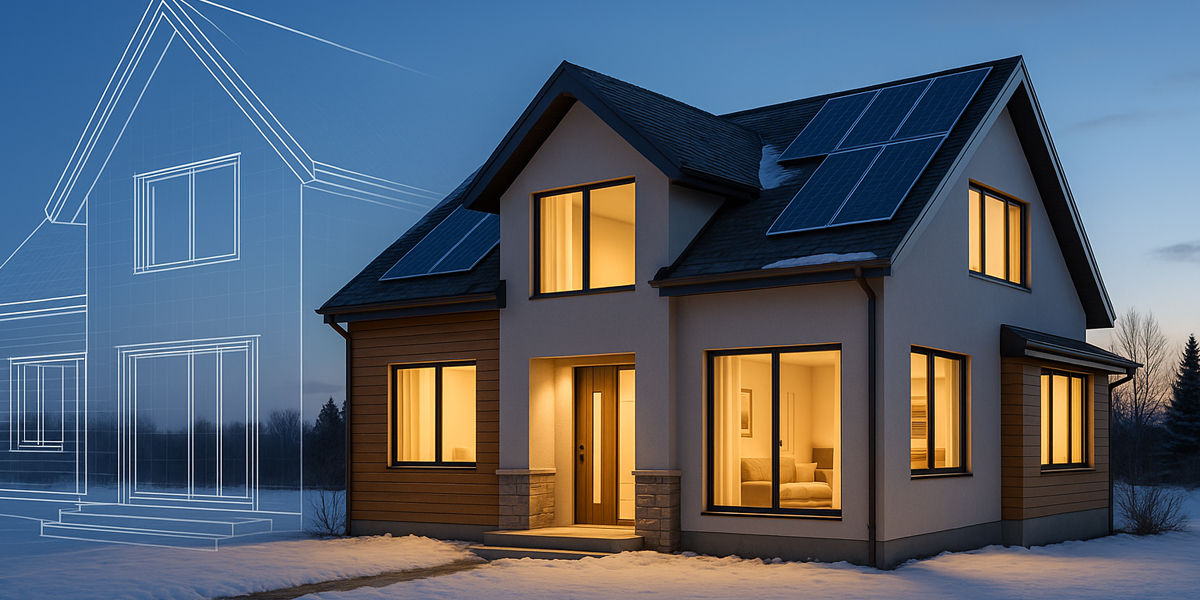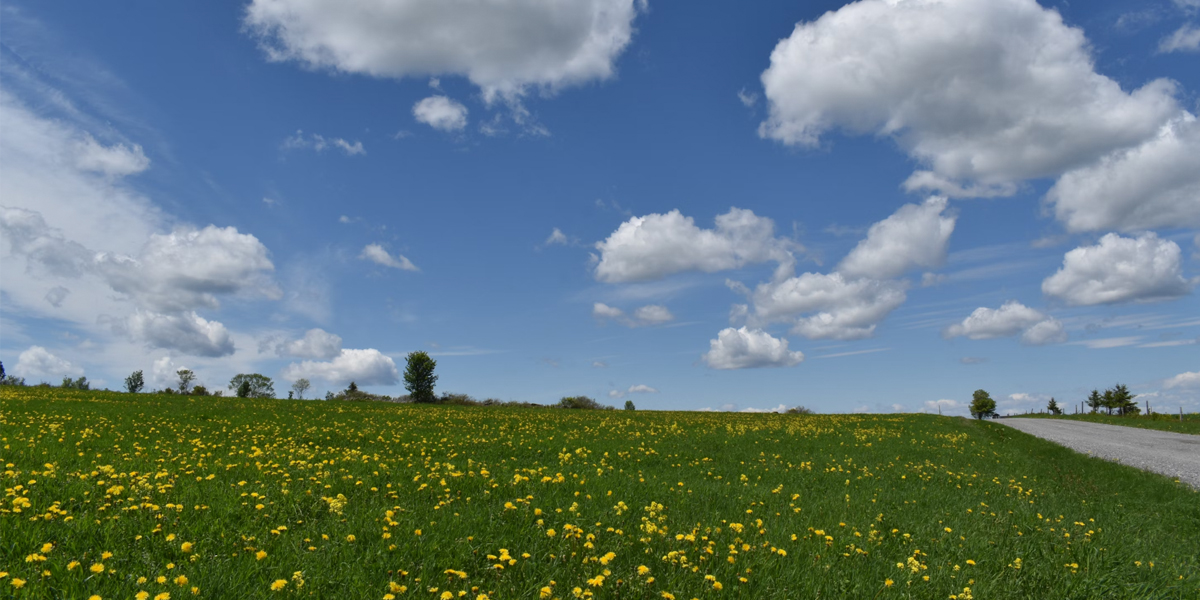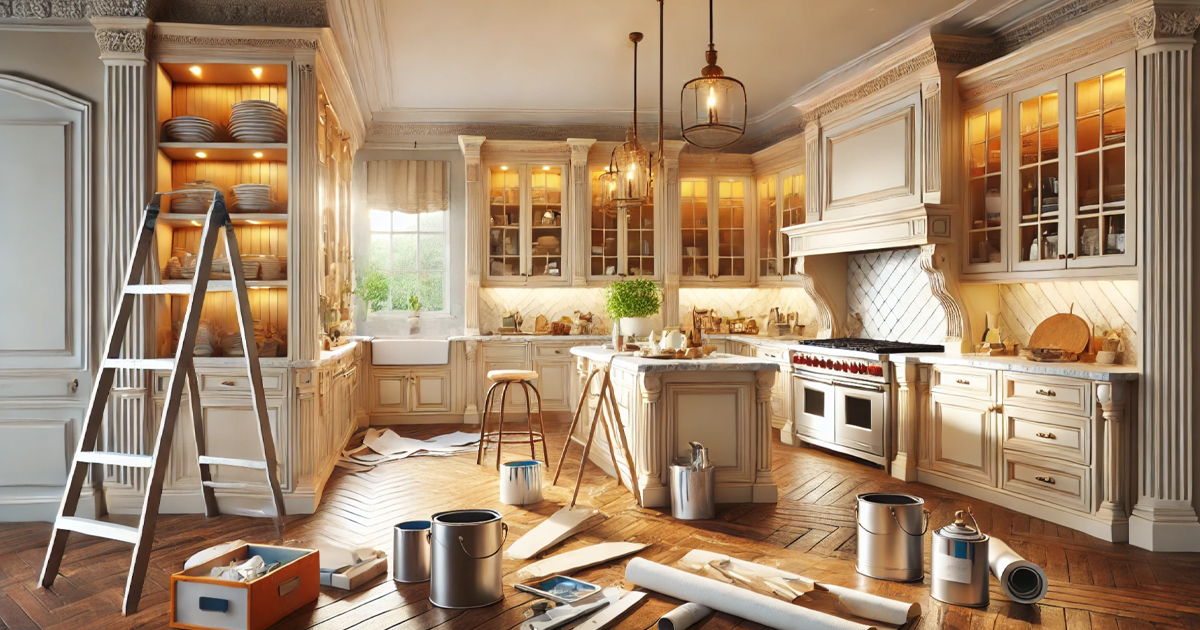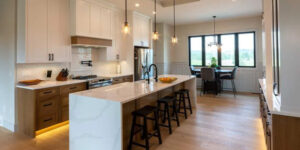Incorporating Energy Efficiency into Your Custom Home
Designing and building a custom home is one of the most exciting ventures a homeowner can undertake. It’s an opportunity to create a space that truly reflects your lifestyle, values, and vision for the future. More than ever, homeowners in Alberta are prioritizing energy efficiency in their home designs—not just to reduce utility costs, but also to minimize environmental impact and build homes that are comfortable, sustainable, and resilient.
Incorporating energy-efficient features from the ground up ensures long-term benefits and aligns your home with modern building standards. This guide explores why energy efficiency is essential, how it applies specifically to Alberta’s climate, and what strategies, materials, and technologies can help you create a sustainable, high-performance custom home.
Why Energy Efficiency Matters in Custom Home Building
Energy efficiency is more than just a trend in modern home design—it’s a necessity. For custom homeowners, every choice in construction impacts long-term comfort, costs, and environmental footprint. Whether it’s reducing heating bills during Alberta’s long winters or cutting reliance on non-renewable resources, efficient building practices create homes that are smarter, healthier, and more sustainable.
By working with experienced builders like Thomas Built Homes, homeowners can prioritize efficiency from the start and ensure their investment delivers benefits for decades to come.
The Environmental Benefits of Sustainable Living
Energy-efficient homes contribute significantly to reducing greenhouse gas emissions. By consuming less electricity and natural gas, a household lowers its carbon footprint and supports broader sustainability goals. Custom homes that incorporate renewable energy and eco-friendly materials set a precedent for responsible living, helping to conserve resources for future generations.
Beyond emissions, sustainable homes also reduce strain on Alberta’s energy grid. With the province relying heavily on natural gas and other fossil fuels, every efficient home helps balance demand, stabilize supply, and pave the way for cleaner energy alternatives.
Long-Term Cost Savings for Homeowners
While energy-efficient upgrades may increase upfront construction costs, they pay for themselves through reduced monthly bills. Better insulation, high-performance windows, and advanced heating systems all cut down on wasted energy. Over time, these savings can amount to thousands of dollars, offsetting initial investments and adding value to your property.
For homeowners planning to stay in their custom homes for decades, efficiency is not just about saving money—it’s about financial stability. Rising energy costs can strain budgets, but efficient homes provide a hedge against unpredictable utility rate increases.
Alberta’s Climate and the Need for Efficient Homes
Alberta’s climate is one of extremes—long, cold winters and hot, dry summers. Homes must withstand temperatures that can swing by more than 30°C across seasons. Without efficiency measures, heating systems in particular can drive up energy consumption during winter months.
An energy-efficient home in Alberta means less heat loss in winter, reduced cooling demands in summer, and a more comfortable indoor environment year-round. By tailoring efficiency strategies to the province’s unique climate, homeowners can enjoy both resilience and comfort.
How to Build an Energy-Efficient Home in Alberta
Creating an energy-efficient home requires more than adding a few green features—it’s about taking a holistic approach to design, construction, and technology. Alberta’s unique climate makes it essential to plan efficiency strategies early, adhere to local building codes, and work with professionals who understand sustainability. From optimizing window placement for solar gain to choosing eco-conscious builders, the foundation of an efficient home begins long before construction starts.
Planning for Energy Efficiency from the Design Stage
Energy efficiency isn’t an afterthought—it starts with smart design. A custom home builder can position the house for maximum natural sunlight, incorporate passive heating and cooling, and optimize layouts to minimize energy waste. Simple decisions, like south-facing windows or compact home designs, can drastically cut heating needs.
Design-stage considerations also include roof slope and orientation (for solar readiness), window placement for natural ventilation, and space planning to reduce heating and cooling loads. Early decisions save money and ensure the home is efficient from day one.
Key Building Codes and Energy Standards in Alberta
Alberta follows the National Building Code of Canada (NBC) and the National Energy Code for Buildings (NECB), which establish minimum energy performance standards. Recent code updates push builders toward higher insulation levels, airtightness testing, and more efficient mechanical systems.
Builders in Alberta must also consider EnerGuide Ratings and programs such as Net Zero Ready and Built Green Canada, which certify homes that exceed basic efficiency requirements. For custom homeowners, working with a builder familiar with these standards ensures compliance and access to rebates or recognition programs.
Working with Eco-Conscious Builders and Architects
Choosing the right team is essential. Builders and architects with sustainability experience can incorporate advanced materials, renewable energy systems, and efficiency-focused designs seamlessly. They also guide homeowners through rebate programs, financing options, and long-term planning strategies.
Homeowners should ask prospective builders about past projects, certifications, and partnerships with green building organizations. Exploring examples of client homes can also provide insight into a builder’s commitment to eco-friendly practices. An eco-conscious builder ensures your home balances beauty, functionality, and performance.
Insulation Options for Maximum Efficiency
Insulation is one of the most effective tools in reducing heat loss and cutting energy costs. In Alberta, where temperatures drop well below freezing, proper insulation ensures that your home retains warmth without overworking heating systems. Homeowners have a variety of options—traditional fiberglass, modern spray foam, or sustainable alternatives like cellulose. Choosing the right insulation not only improves efficiency but also enhances comfort, noise reduction, and indoor air quality.
Spray Foam vs. Fiberglass vs. Cellulose
Insulation is the backbone of an efficient home, and Alberta’s cold winters make it especially critical.
- Spray Foam Insulation: Offers excellent airtightness and high R-values but comes with higher costs. Ideal for sealing small gaps and irregular spaces.
- Fiberglass Batts: A budget-friendly option that provides good insulation when installed correctly. However, gaps or compression can reduce effectiveness.
- Cellulose Insulation: Made from recycled paper products, cellulose provides strong thermal resistance and eco-friendly benefits. It also reduces sound transmission.
The right choice depends on budget, performance goals, and builder expertise.
Green Insulation Alternatives
For eco-minded homeowners, options such as sheep’s wool, cotton batts, and cork insulation provide renewable and low-impact alternatives. These materials are non-toxic, biodegradable, and still perform well in Alberta’s climate.
Preventing Heat Loss in Alberta’s Cold Winters
In addition to selecting the right insulation, homeowners must address common heat loss areas like basements, attics, and around windows. Proper air sealing insulated concrete forms, and advanced framing techniques all help lock in warmth. Together, these strategies keep homes cozy without driving up heating costs.
Choosing the Right HVAC Systems
A home’s heating, ventilation, and air conditioning (HVAC) system plays a central role in maintaining comfort while controlling energy use. In Alberta, high-performance HVAC solutions are essential to withstand the seasonal extremes. Modern systems like high-efficiency furnaces, heat pumps, and smart thermostats help optimize energy consumption while keeping your living space consistently comfortable. Pairing the right system with strong insulation and proper ventilation creates a home that is efficient and healthy.
High-Efficiency Furnaces and Heat Pumps
Given Alberta’s winter demands, heating accounts for a significant portion of energy use. High-efficiency furnaces with ratings above 95% ensure maximum fuel-to-heat conversion. Meanwhile, air-source or ground-source heat pumps provide efficient year-round heating and cooling, reducing reliance on fossil fuels.
Smart Thermostats and Zoning Systems
Smart thermostats learn homeowner habits, adjusting heating and cooling to minimize waste. Zoning systems further enhance efficiency by directing conditioned air only to occupied spaces, ensuring comfort without overworking equipment.
Ventilation Strategies for Healthy Indoor Air
Efficiency doesn’t mean sacrificing indoor air quality. Heat Recovery Ventilators (HRVs) or Energy Recovery Ventilators (ERVs) exchange stale indoor air with fresh outdoor air while capturing heat to reduce energy loss. Proper ventilation balances efficiency with health.
Solar Panels and Renewable Energy Solutions
Harnessing renewable energy is one of the most impactful ways to future-proof your custom home. Alberta’s abundant sunshine makes solar panels an attractive option for reducing utility bills and increasing energy independence. By integrating solar systems—and potentially battery storage—homeowners can generate clean energy year-round. Combined with government incentives and rebates, renewable energy solutions offer long-term savings while significantly reducing your carbon footprint.
Benefits of Solar Energy in Alberta
Alberta enjoys some of the sunniest skies in Canada, making solar panels a practical renewable energy option. Solar can offset electricity bills, increase home value, and provide energy independence.
Incentives and Rebates for Homeowners
Programs such as Canada’s Greener Homes Grant and various municipal incentives help offset installation costs. Alberta homeowners can access rebates for solar panels, energy-efficient retrofits, and battery storage, reducing payback periods.
Combining Solar with Battery Storage
Pairing solar panels with battery systems ensures homes remain powered during outages and maximizes the use of generated electricity. For homeowners aiming for net-zero homes, solar plus storage is a powerful solution.
Energy-Saving Appliances and Smart Technology
Energy efficiency doesn’t end with your home’s structure—it extends to the appliances and devices you use every day. From refrigerators to washing machines, modern ENERGY STAR-rated appliances consume far less power than older models. Adding smart home technology, such as automated lighting, thermostats, and power strips, takes efficiency to the next level. Together, these upgrades simplify daily living while lowering your overall energy demand.
ENERGY STAR-Certified Appliances
Appliances account for a large share of household energy use. Choosing ENERGY STAR-certified refrigerators, washers, dryers, and dishwashers ensures lower consumption and reduced operating costs.
Smart Home Automation for Efficiency
Home automation systems allow homeowners to control lighting, temperature, and even appliances remotely. Automated lighting schedules, occupancy sensors, and load-shedding strategies all improve energy savings.
Reducing Phantom Power Usage
“Phantom load” refers to energy consumed by devices in standby mode. Using smart power strips or unplugging devices when not in use helps reduce unnecessary consumption.
Sustainable Building Materials to Consider
The materials you choose to build your home shape its efficiency, durability, and environmental impact. Today’s market offers countless sustainable options, from low-VOC paints that improve air quality to recycled materials that minimize waste. Even features like triple-pane windows and insulated doors contribute to both energy savings and comfort. By thoughtfully selecting building materials, homeowners can create spaces that are both eco-friendly and aesthetically pleasing.
Low-VOC Paints and Finishes
Indoor air quality matters as much as efficiency. Low-VOC (volatile organic compound) paints and finishes release fewer harmful chemicals, keeping air clean and reducing environmental impact.
Sustainable Wood and Recycled Materials
Choosing FSC-certified wood, reclaimed lumber, or recycled steel ensures building materials are responsibly sourced. These materials reduce environmental damage and often provide unique aesthetic character.
Energy-Efficient Windows and Doors
Windows and doors are key weak points for energy loss. Double- or triple-pane windows with low-E coatings, insulated frames, and tight seals prevent drafts and heat transfer. Energy-efficient doors with proper weatherstripping further strengthen a home’s thermal envelope.
Conclusion – Building Your Energy-Efficient Custom Home in Alberta
Incorporating energy efficiency into your custom home is both a practical and forward-thinking investment. For Alberta homeowners, efficiency means staying warm through frigid winters, cool in summer, and comfortable year-round—all while lowering utility bills and reducing environmental impact.
From thoughtful design and airtight insulation to smart HVAC systems, solar power, and sustainable materials, every choice contributes to a home that is efficient, durable, and future-ready. With the right planning and eco-conscious team, you can create a custom home that not only reflects your personal style but also stands as a model of sustainability for years to come. To take the next step, connect with experienced builders through the Thomas Built Homes contact page.
FAQs
Why should I prioritize energy efficiency in my custom home?
Energy-efficient homes reduce utility costs, improve comfort, and minimize environmental impact. In Alberta’s extreme climate, efficiency ensures your home stays warm in winter and cool in summer without wasting energy.
What is the best insulation option for homes in Alberta?
The best insulation depends on your goals and budget. Spray foam offers excellent air sealing, fiberglass batts are affordable, and cellulose provides an eco-friendly alternative. All three work well when properly installed.
Can solar panels really work in Alberta’s climate?
Yes. Alberta is one of Canada’s sunniest provinces, making solar panels a highly effective option. They reduce electricity bills, qualify for rebates, and can be paired with battery storage for added resilience.
How do smart home technologies improve energy efficiency?
Smart thermostats, automated lighting, and energy monitoring systems help reduce unnecessary energy use. They optimize heating, cooling, and appliance operation to save money while keeping your home comfortable.
Are there rebates or incentives for building an energy-efficient home in Alberta?
Yes. Programs like Canada’s Greener Homes Grant and various municipal incentives offer rebates for solar panels, energy-efficient appliances, insulation upgrades, and more, helping offset upfront costs.







